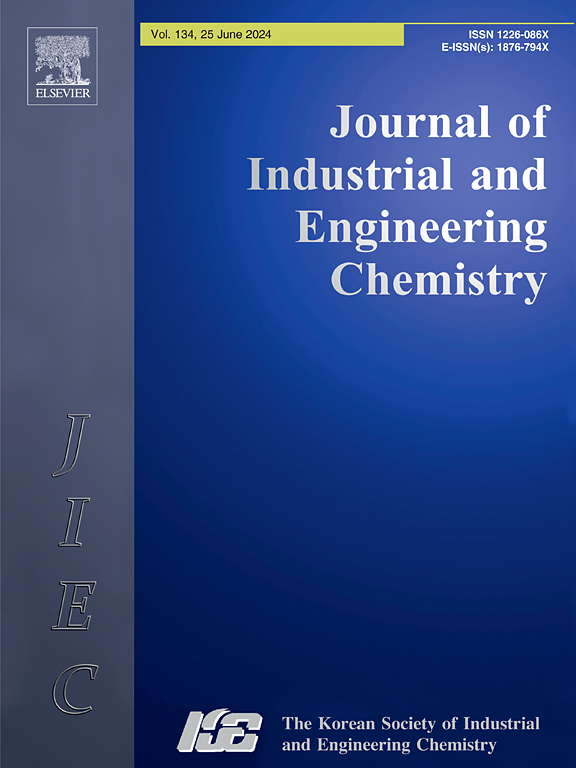Experimental and molecular simulation study of CO2 adsorption in ZIF-8: Atomic heat contributions and mechanism
IF 5.9
3区 工程技术
Q1 CHEMISTRY, MULTIDISCIPLINARY
Journal of Industrial and Engineering Chemistry
Pub Date : 2024-11-05
DOI:10.1016/j.jiec.2024.11.004
引用次数: 0
Abstract
We successfully synthesised ZIF-8 using the solvothermal method at room temperature to study CO2 adsorption storage at 273 and 298 K up to 35 bar. Characterisation methods such as BET, SEM-EDS, XRD, and TGA were used to measure the physical and composition properties of ZIF-8. Grand canonical Monte Carlo (GCMC) simulation was conducted to compare with experimental data and get inside of the CO2 adsorption mechanism by calculating the isosteric heat and its fluid–fluid and solid–fluid contributions. The second was also split into fluid–solid atom contributions to understand in detail the interaction between CO2 and ZIF-8. The analyses revealed that there are three main stages during the CO2 adsorption gas–solid atom contributions, developing, pore-filling and densification. During the developing and pore-filling stages the largest fluid–solid atom contribution to the isosteric heat is CO2-C2 interactions, indicating that the CO2 is adsorbed close to the hexagonal windows of the ZIF-8 structure, while during the densification stage the largest contribution is CO2-N interactions. Where C2 and N refers to C-atom and N-atom, respectively in NCH group of the solid framework. This is because CO2 changes its orientation to be able to accommodate more molecules in the pore cavity. This work provides a better understanding of the adsorption mechanism of CO2 on ZIF-8 and shows how molecular simulation can be used to improve the understanding gas adsorption storage on metal–organic frameworks.

求助全文
约1分钟内获得全文
求助全文
来源期刊
CiteScore
10.40
自引率
6.60%
发文量
639
审稿时长
29 days
期刊介绍:
Journal of Industrial and Engineering Chemistry is published monthly in English by the Korean Society of Industrial and Engineering Chemistry. JIEC brings together multidisciplinary interests in one journal and is to disseminate information on all aspects of research and development in industrial and engineering chemistry. Contributions in the form of research articles, short communications, notes and reviews are considered for publication. The editors welcome original contributions that have not been and are not to be published elsewhere. Instruction to authors and a manuscript submissions form are printed at the end of each issue. Bulk reprints of individual articles can be ordered. This publication is partially supported by Korea Research Foundation and the Korean Federation of Science and Technology Societies.

 求助内容:
求助内容: 应助结果提醒方式:
应助结果提醒方式:


